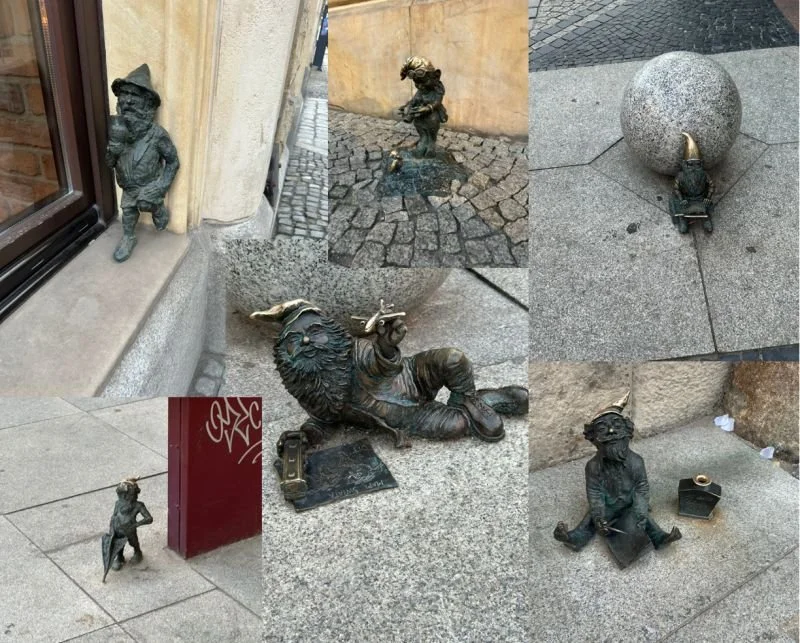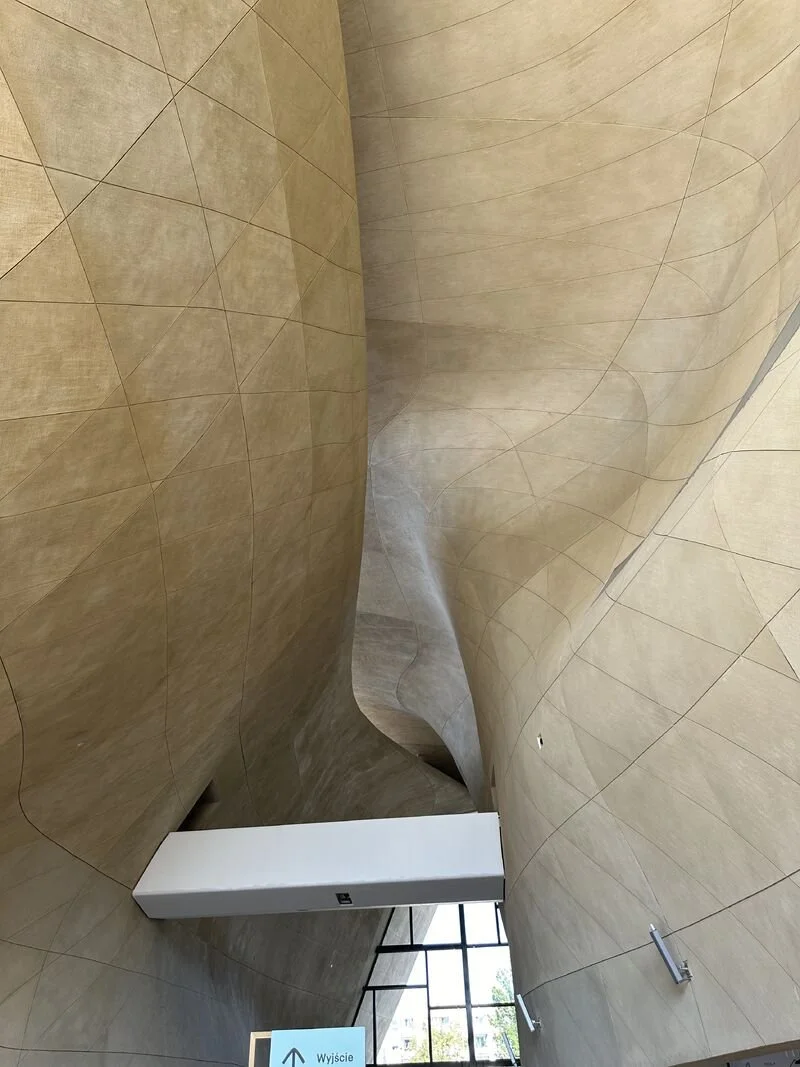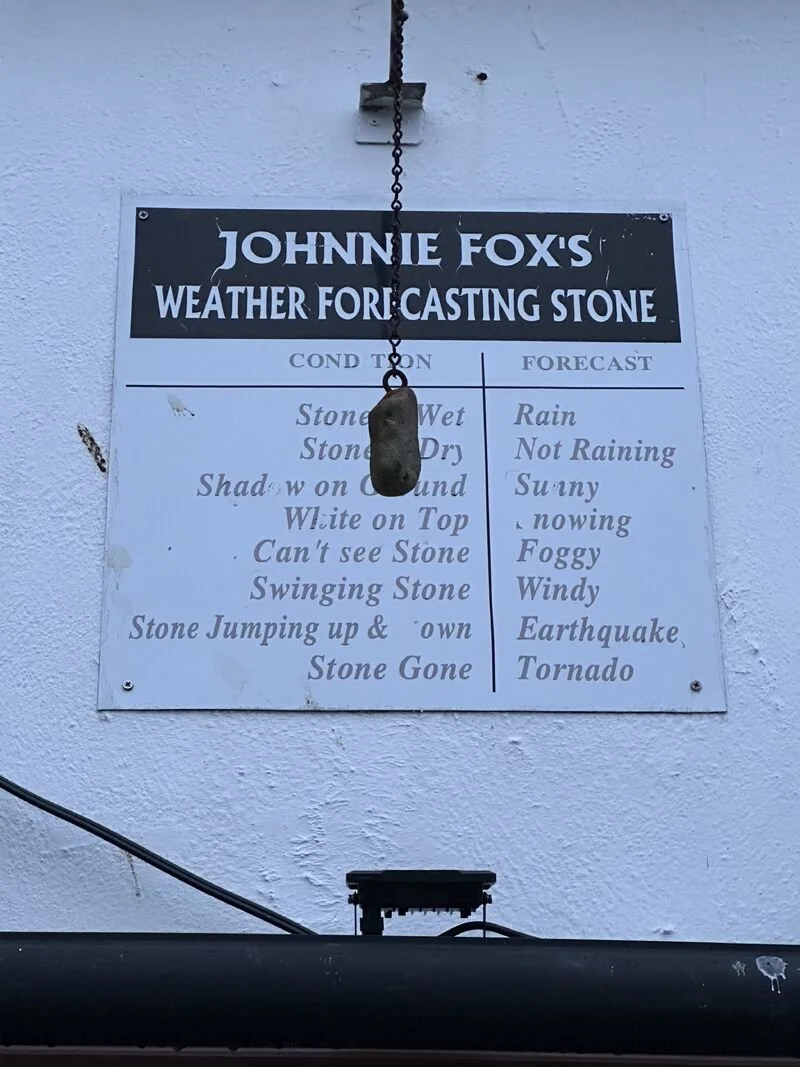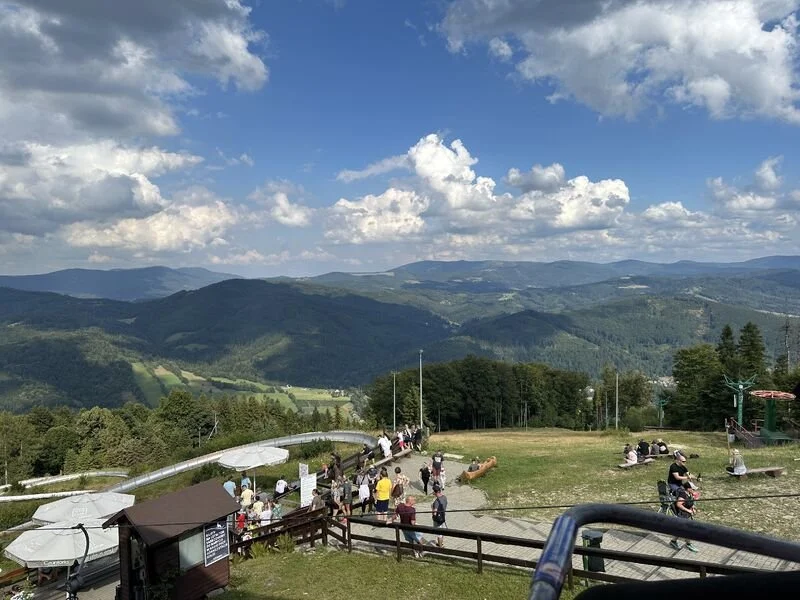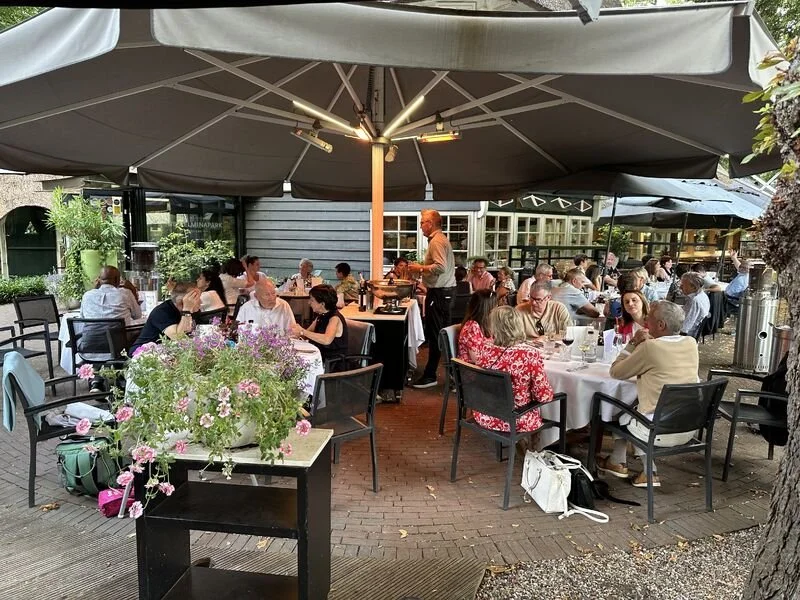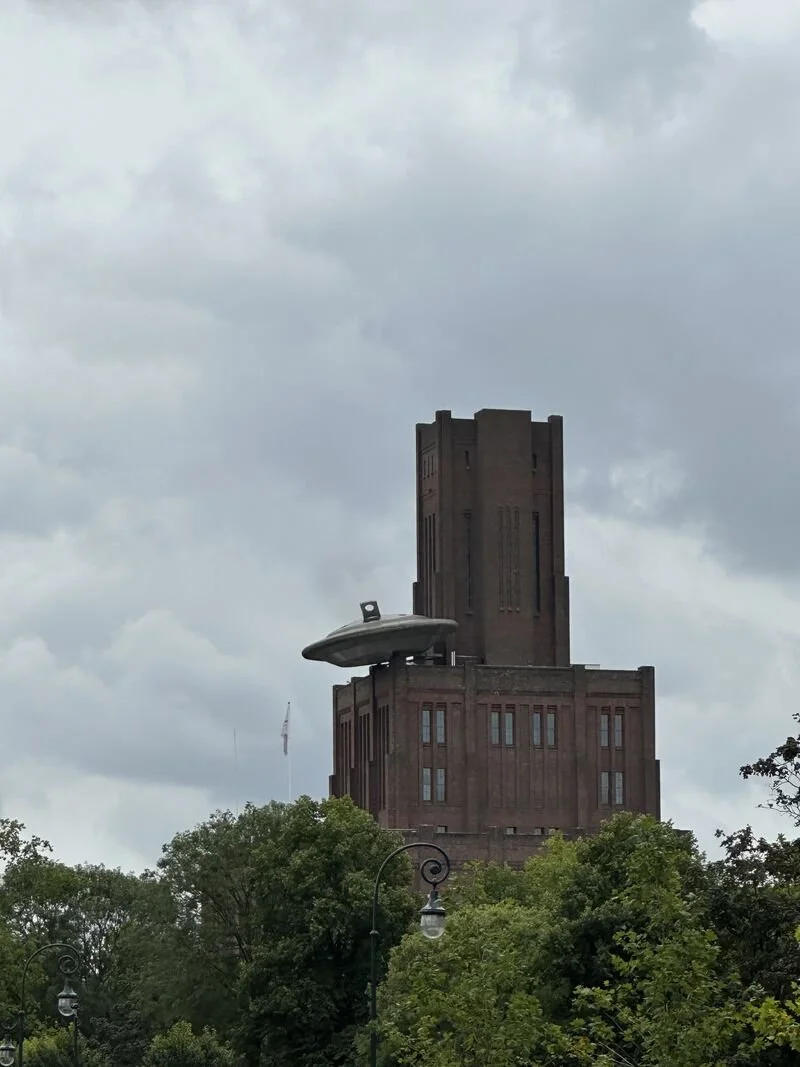Day 32 of Embracing the wonders of life!
The charming gnomes scattered across Wrocław are more than just funny decorations; they are potent symbols of resistance, cleverly embedding a deep historical narrative within the public domain. These small bronze figures, known as "krasnale," began appearing in the city in the early 2000s as a tribute to the Orange Alternative movement, a surrealist resistance group that used humor and absurdity to challenge the oppressive communist regime in Poland during the 1980s.
The Orange Alternative was famous for its unconventional protests, which often involved graffiti, street performances, and parodic demonstrations. At the height of martial law, when official symbols of dissent were swiftly erased, the group would paint dwarfs over the government’s cover-up of anti-communist slogans. This absurd but playful act served to mock the government’s seriousness, undermining its authority by turning repression into a joke that was impossible to silence without seeming even more ridiculous.
Today, these gnomes are scattered throughout Wrocław, often unnoticed by passersby who may initially see them as nothing more than a delightful tourist attraction. Yet, their presence is a powerful reminder of how hidden meanings can be placed in public spaces, quietly referring to a rich history while also engaging the present. The gnomes carry with them the legacy of a time when resistance had to be both creative and covert, showing the spirit of a movement that used wit to wage war against an oppressive system.
By transforming these symbols of defiance into a playful citywide feature, Wrocław has ensured that the story of the Orange Alternative remains alive, not through grand monuments but through subtle, almost hidden reminders. The gnomes invite reflection on how public art can serve as a vehicle for historical memory, embedding profound meaning in plain sight.
To bring similar symbolism into your own stories or strategies, consider how you can incorporate layers of meaning that resonate on both the surface and deeper levels. Whether through subtle imagery, thoughtful metaphors, or playful elements, embedding symbolism can enrich your narrative, making it not just engaging but also meaningful. Like the gnomes of Wrocław, your symbols can quietly carry a powerful message, waiting to be discovered by those who look a little closer.
If you have some good examples of symbols in your stories or city, please let me know. Curious to hear!
Day 31 of Embracing the wonders of Life!
This picture is taken from my travel from Gothenborg to Stockholm, having the opportunity to meet my Swedish clients again. When I took the picture I realised that taking the train offers a unique and often under appreciated mode of travel that goed beyond the mere act of getting from point A to point B.
Unlike the hustle and bustle of air travel or the sometimes stressful demands of driving, train journeys offer a rare opportunity to slow down and appreciate the world from a different perspective. The rhythmic click-clack of the tracks and the gentle sway of the carriage create a soothing environment that allows you to unwind and settle into a reflective state of mind.
For me, one of the greatest advantages of train travel is the unparalleled views it provides. As the landscape unfolds outside your window, you get to see the world in a way that is impossible from highways or in the air. There’s a certain magic in watching the scenery shift from bustling cities to serene countryside, with lakes, forests, and mountains passing by like a moving painting. These sights remind us of the beauty that often goes unnoticed in our fast-paced lives.
It also offers a focused and distraction-free environment that is perfect for getting work done. Unlike the interruptions of air travel or the concentration required while driving, trains provide a quiet space where you can read, write, or even daydream without disruption. The steady progress of the journey provides a comforting backdrop that enhances creativity and productivity.
Moreover, the train’s pace encourages you to be present, to enjoy the journey as much as the destination. The simple act of watching the world go by fosters a sense of mindfulness, grounding you in the moment. This combination of purposeful travel and serene observation makes train journeys not just a means of transport, but a valuable experience in their own right—a reminder that sometimes the journey is as important as the destination.
Day 30 of Embracing the wonders of Life!
The two pictures I recently took have left a deep impression on me, challenging my perceptions of heroism. The first, from the Polin Museum in Warsaw, which tells the story of 1000 years of Jewish history in Poland. The architecture itself tells a story, with a flowing design representing the continuity of history, interrupted only by a ripple in the roof—symbolizing the disruption caused by the Holocaust. It’s a powerful example of how meaningful design can encapsulate profound historical narratives.
The second image is from an exhibition on the Warsaw Uprising, focusing on the women who played crucial roles during this pivotal event. These women, often overlooked by history, displayed incredible bravery, contributing to the resistance in any way they could, despite the immense danger. Their actions remind me that the true heroes in life are not always those with fame or power, but ordinary individuals who prioritize the greater good over their own safety.
Reflecting on these images, I find myself questioning my own courage. If faced with a similar crisis, would I make the bold choice to act selflessly, or would I find excuses to protect myself, convincing myself that I could help in safer ways? We all like to believe we’d be the hero, but crises often reveal our true nature. This reflection isn’t meant to make us feel less, but rather to deepen our appreciation for those who do make such sacrifices. True heroism is not about grand gestures but about the quiet, often unseen decisions that put others before oneself. We should honour these everyday heroes and reflect on the courage it takes to make those bold choices, hoping that we too might rise to the occasion if ever called upon.
Day 29 of Embracing the wonders of Life!
Sometimes, we complicate life unnecessarily. This picture I took in Ireland is a reminder that simplicity can be incredibly effective. Sure, we have advanced satellites and AI models to give us detailed weather forecasts. But if you just want to know the current weather, this simple rock does the job perfectly. It’s a reminder that some of the most straightforward things in life can offer profound clarity.
This idea was also beautifully demonstrated by Marco van den Brink during that same trip. On a morning taxi ride to the office, Marco, with his signature smile, turned to the driver and asked, “Are you happy?”. The driver, caught off guard, paused, then smiled widely. It turns out that Marco regularly asks this question, and it almost always leads to either a smile or an interesting conversation.
Marco’s simple question has a powerful impact, rooted in what psychologists call the “question-behavior effect” or “self-referencing effect.” When people are asked about their happiness or well-being, they tend to reflect on positive aspects of their lives, which can instantly boost their mood.
Empirical research backs this up. For instance, Kurtz (2008) found that when students reflected on the fleeting nature of their college experiences, they reported higher levels of happiness. Similarly, Oishi et al. (2007) discovered that asking people to think about their happiness made them more aware of their emotional state, often leading to a better mood.
Given how easy it is to uplift someone’s spirits, why not follow Marco’s example? Asking someone if they’re happy is a small act with the potential for big impact. If they’re not, it opens the door to a meaningful conversation. If they are, you’ll reinforce their joy.
It’s a simple, free gift we can all give to the world.
Day 28 of Embracing the wonders of Life!
Day 28 of Embracing the wonders of life!
This photo was taken on one of the amazing mountains in Poland, right where the towering peaks meet the rolling lowlands. The landscape tells a story, revealing how the valleys have been carved out by ancient glaciers. These immense forces of nature, acting over millennia, have shaped the land in ways that continue to impact it today. It's a reminder of how powerful the past can be, leaving a lasting imprint on the present.
This view made me reflect on the glaciers in our own lives—the experiences and events that have shaped us, just as the glaciers shaped those valleys. These "glaciers" are the forces that have carved out pathways in our memories, creating the valleys through which we navigate our lives. Just as those valleys now serve as roads that allow us to move forward, our personal valleys are the channels that enable us to progress, accelerate, and thrive.
But how often do we pause to consider what those glaciers were? Do we take the time to reflect on the experiences that have shaped us, understanding their influence and learning from them? By doing so, we can truly appreciate the valleys in our lives, and use them not just as pathways, but as foundations for growth, resilience, and wisdom. Reflection allows us to harness the power of our past, turning it into a guiding force for the future.
Day 27 of Embracing the wonders of Life!
Over the weekend, we gathered for the annual “Van Kesteren Foundation” event, where we received updates on the various projects supported by the foundation. For those unfamiliar, I proudly bear the Van Kesteren name – it’s my mother’s side. The foundation owes its existence to my youngest uncle, Gerard.
Gerard’s journey began in a humble barber family. At the age of 17, he made a bold decision: he wanted to leave school and become a barber. However, my grandmother intervened. She literally dragged him back to school by his ears, determined to ensure he had the opportunity to create a better life for himself.
Gerard listened. He didn’t let his grandmother’s lesson fall on deaf ears. Instead, he became one of the youngest “registered accountants” in the Netherlands. His career took him from Douwe Egberts/Sara Lee to bringing Kuehne & Nagel to the stock exchange as their CFO. Notably, he even earned the title of CFO of the Year in Switzerland – an impressive feat for a Dutch barber’s son.
The story of the intervention of my grandmother, has been the repeating story I got drilled by my own mother, in her strive to make me aware on how to increase my own chances in life.
But Gerard didn’t stop there. He internalized the wisdom passed down from his mother. Rather than merely accumulating wealth, he found his life’s purpose: supporting projects that empower children in developing countries through education. It’s about enriching lives – not just for the children themselves but also for their families.
The Real Insight: Leaving a Legacy
Now, let’s reflect. What legacy do we want to leave behind? Is it a yacht or an expensive car? Or is it something more profound? Gerard’s example reminds us that impact transcends material possessions. By spreading knowledge and enabling opportunities, we contribute to a more equitable distribution of wealth across the world.
So, as we navigate our own paths, let’s consider how we can make a lasting impact. Perhaps it’s through education, mentorship, or supporting causes close to our hearts. Whatever it is, let’s choose to leave a legacy that extends beyond ourselves – one that echoes through generations.
Remember, it’s not about what we accumulate; it’s about what we give back. 🌟🌎📚
Day 26 of Embracing the wonders of Life!
Day 26 of Embracing the wonders of life!
This is picture is from my home town in Utrecht. On a very iconic building called “The Inktpot” (the bottle of ink, you would put your pen in), a UFO landed in 1999. It was part of an art exhibition in Utrecht, where from the iconic Dom Tower, you would be able to see many different art objects. Most of the objects have already been removed, but since the people loved the UFO so much, it has remained a permanent part of the Utrecht skyline.
It triggers me on many levels. Why would you come up to land something so futuristic on such a characteristic building. I can imagine that the artist looked through the eyes of the aliens. If you would land on a place, would you just pick any place, or would you pick out something iconic (irregardless of the bad parking). I for sure would pick the iconic one.
This thought triggered other thoughts in me. As we sometimes are surprised by the questions from children on things we think are completely normal, can we challenge ourselves to look at our own life, work, thinking through the eyes of an alien. Imagine you have no background knowledge on topics, but you can ask questions through the eyes that just landed on earth.
I think this is something that people and organisations can adopt. Call it the “Alien sessions”. Take a certain topic and form two groups. One will act in their normal way of thinking and one group will act as the aliens. Challenging everything and really try to look through the eyes of an alien. Share the outcomes and see if this leads to new ideas. Also discuss and try to understand where the questions came from.
Remember, sometimes your clients or stakeholders are also not fully aware of your knowledge and will act like an Alien.
To give some extra inspiration listen to the amazing track “Little Green Man” from Steve Vai. Will bring you into alien spirits for sure!
Day 25 of Embracing the wonders of life!
During my hike in Germany, I crossed the Orke, a charming river that flows into Eder Lake. Walking over a small wooden bridge, I paused to watch the water's flow. It reminded me of when I first learned the term "meandering" during one of my early career projects named "Meander." The project name was based on the fact that progress isn't always a straight line; sometimes, you encounter obstacles that require you to navigate around them.
This reflection also brought to mind the Taoist concept of Wu Wei, which means going with the flow. It suggests that instead of fighting every obstacle, we should adapt and move in harmony with our surroundings. This isn't about being passive or lethargic, but rather about knowing when to adjust and when to push forward.
The Orke river has flowed for centuries by simply following its natural course. Observing this timeless flow made me think about areas in my own life where I could benefit from going with the flow rather than resisting.
Just as the Orke navigates its path, we too can find a more harmonious way to reach our goals by adapting to our environment. Embracing flexibility and understanding when to adjust can lead to smoother journeys and more fulfilling outcomes.
So, the next time you encounter obstacles, remember the Orke. Instead of resisting, consider how you might adapt and flow around the challenges. Sometimes, the path to success isn't about force but about finding the natural course and following it with grace.
Day 24 of Embracing the wonders of life!
While walking in the mountains of Germany—what we Dutch often consider mountains—I encountered a beautiful snail. It moved slowly, carrying its exquisite home on its back. During my holiday, reflecting on a hectic year, I thought about the coaching I received over the past year and a half. One of the most valuable lessons I learned is that we all carry our legacy with us, much like the snail carries its home.
Our experiences, both good and bad, shape who we are. These experiences, whether the encouragement from our parents or the lessons from school, influence our behavior. However, they don't have to control us. It's crucial to recognize what has shaped us because these experiences are a part of us. Yet, we have the power to decide how they affect our lives.
It all starts with acceptance. Once we accept our past, the house we carry with us no longer feels like a burden. Instead, it becomes a part of us that has helped shape our identity but doesn't define us. We can train ourselves to respond differently, to make choices that reflect who we want to be rather than who we've been conditioned to be.
So, as you go through life, remember to embrace your experiences. They are part of your unique journey, but they don't have to dictate your future. Accept your past, learn from it, and let it guide you without letting it control you. This way, you can move forward with the same grace and purpose as the snail, carrying your home with pride.
